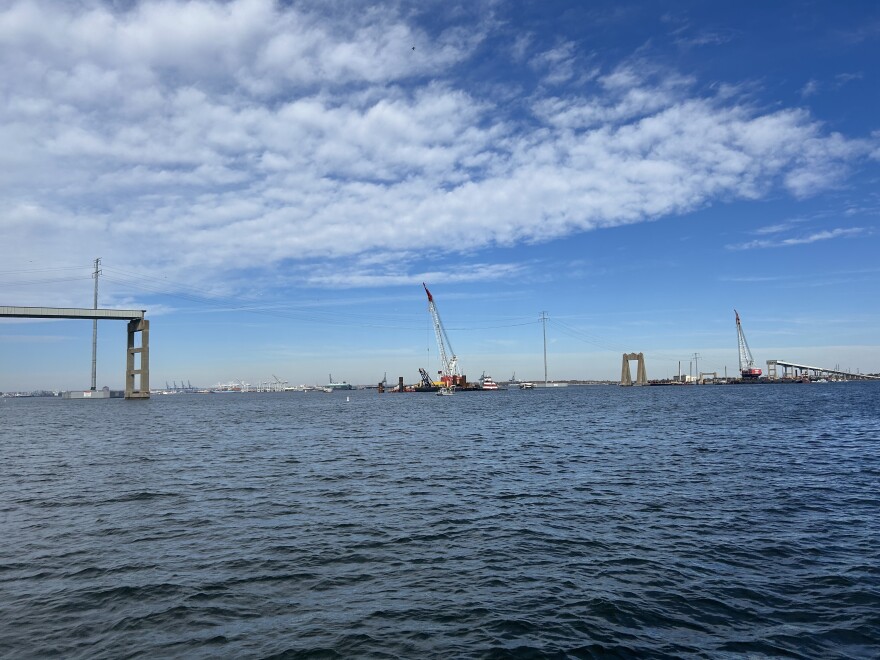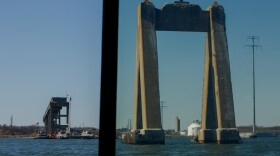The rebuild of the Francis Scott Key Bridge will cost billions more than originally estimated and will take an estimated two years longer to complete, according to the Maryland Transportation Authority.
MDTA updated its forecast for the bridge, which collapsed last March, on Monday evening, just a day before the National Transportation Safety Board is expected to approve the final report on what caused a cargo ship to hit the bridge.
The forecast projects the bridge rebuild will now cost between $4.3 billion and $5.2 billion, a significant increase from the original estimate of $1.7 billion to $1.9 billion.
MDTA also said the rebuild will take two years longer and finish in 2030, rather than the original date of fall 2028.
“As design has advanced and pre-construction work progresses, it became clear that material costs for all aspects of the project have increased drastically since the preliminary estimates were prepared less than two weeks after the initial tragedy,” said Acting Transportation Secretary and MDTA Chair Samantha J. Biddle.
Biddle went on to state that the cost range and schedule changes are directly correlated to increased material costs and to a robust pier protection system designed to protect the bridge from future ship strikes.
“The new Francis Scott Key Bridge isn’t just a local infrastructure project — it’s vital to our nation’s economy and will connect the Baltimore region to economies throughout the United States and the world,” Biddle said. “Although rebuilding will take longer than initially forecasted and cost more, we remain committed to rebuilding as safely, quickly and cost effectively as possible.”
According to the Federal Highway Administration, highway construction costs have increased by 72% in the last five years. Inflation and labor costs also factored into the cost increase.
The American Relief Act authorized more than $8 billion of federal reimbursement for the Key Bridge rebuild and cleanup.
Maryland and the city of Baltimore are currently suing the ship owner and manager for damages.
The Key Bridge’s rebuild design is now 70% complete and the project is still ahead of other similar projects in terms of how quickly it is planned to finish.
The new bridge design, which is headed by the construction company Kiewit, has the structure spanning 1,665 feet.
MDTA will be conducting a test pile program at the bridge site over the next few months to ensure the soil can hold the weight of the bridge and settle properly.
Six piles over 200 feet long have already been installed. A load frame will be attached to the piles to ensure the soil is solid enough and that it can hold the weight of the bridge. More piles will be installed in other parts of the river as well for the same test.
“We are testing these to ten million pounds. This is the support for the new bridge,” said Jim Harkness, MDTA’s chief engineer. “It’s a very large bridge. We need to make sure we have confident foundations.”
The state is using the two largest cranes on the East Coast to move the piles and help hammer in the piles.
MDTA started the partial demolition of what was remaining of the bridge in July, moving 10,000 tons of debris out of the area, according to Jason Stolicny deputy director of private development at MDTA.
“We’ve now taken off the deck on the north and south part of the bridge,” Stolicny said.
The structural steel will be removed from 13 spans of the south side of the bridge next. Each span has seven girders weighing 50,000 pounds. Four spans have been completed so far. A similar operation will start on the north side of the bridge after that and then piers that are connected to land.
Those activities will run into early 2026.









